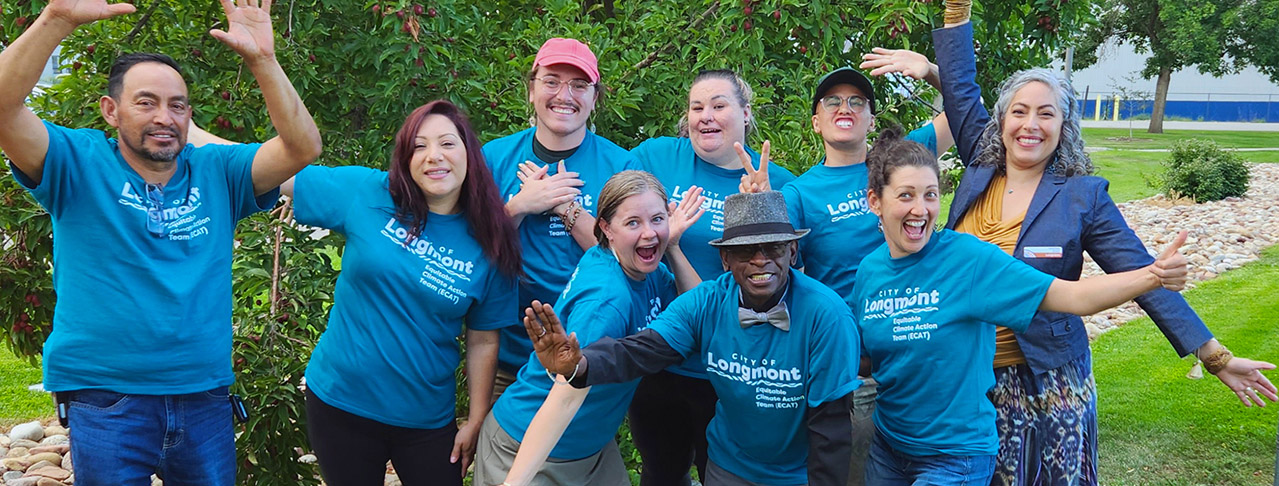Equitable Climate Action Team

Community » Sustainability » Areas of Focus
Buildings & Infrastructure
“Sustainable and resilient buildings and infrastructure” means structures and systems designed to minimize environmental impacts, connect people and the environment, use less energy and money to operate and maintain, and are resilient to natural and human-caused hazards.
For example, practices such as rain gardens and green roofs serve to mitigate the heat island effect, increase biodiversity in urban settings, sustainably manage storm-water, improve air and water quality, and enhance social connectivity by creating inviting places for people to gather and recreate.
Resilient and Sustainable Design
Envision Longmont
Envision Longmont promotes a more sustainable and resilient built environment. The plan focuses on the following:
- Compact growth, with a specific emphasis on infill development and redevelopment.
- Expanded housing options and ease of access to transportation and employment.
- Sustainable site planning and development.
Track progress on actions and indicators on the Envision Longmont Indicators page.
Longmont Planning and Development
City of Longmont
Visit the Planning and Development Services page to learn how the team works to ensure that development and redevelopment in Longmont is sustainable. An example of a current practice is:
- Low Impact Development discussion required in the drainage report.
Visit the Code & Policy section of the website for more information on standards.
The following list includes links to common environmental certifications:
- The Environmental Protection Agency’s voluntary program Indoor airPLUS.
- Home Energy Rating System (HERS)
- Energy Star.
- Department of Energy’s Zero Energy Ready Homes.
- U.S. Green Building Council’s LEED certification.
- The WELL Building Standard.
Sustainable Design Guide
Longmont has created a Sustainable Design Guide (coming soon!) to provide recommendations for addressing Accessibility, Ambient Noise/Light, Historic Preservation, Development Footprint, Floodplain Protection, Heat Island, Housing Options, Indoor Air Quality, Infill/Redevelopment, Low-Impact Development, and Policy and Planning.
Building Retrofits and Reuse
According to the 2016 American Community Survey, approximately 44% of Longmont housing was built before 1980. Older homes may be less energy efficient which could lead to higher utility bills. Longmont is working to retrofit and repair old buildings.
- Looking for renter or homeowner support? Check out the different housing resources the City has to offer.
- Longmont’s Redevelopment and Revitalization Division works on Urban Renewal and Redevelopment Areas in Longmont.
- Longmont works to preserve the history through designated Historic Longmont Landmarks.
Indoor Air Quality
Poor household ventilation can decrease indoor air quality by inhibiting adequate outdoor air flow to dilute indoor emissions and removing indoor pollutants. Learn more about the EPA’s Indoor Air Quality Resources.
Monitor Your Indoor Air Quality
Check out a Radon Gas Detector and Carbon Dioxide Detector from the City of Longmont Public Library.
- Radon is a toxic odorless gas that naturally occurs from the breakdown of uranium in soil and rock. Learn more about radon on Boulder County’s website.
- Sick Building Syndrome (SBS) is a medical condition where people in a building suffer from symptoms of illness for no apparent reason. High levels of carbon dioxide (CO2) gas could be dangerous to your health.
Energy Efficiency
Please review the Energy page to learn how to make your home or business more energy efficient.
